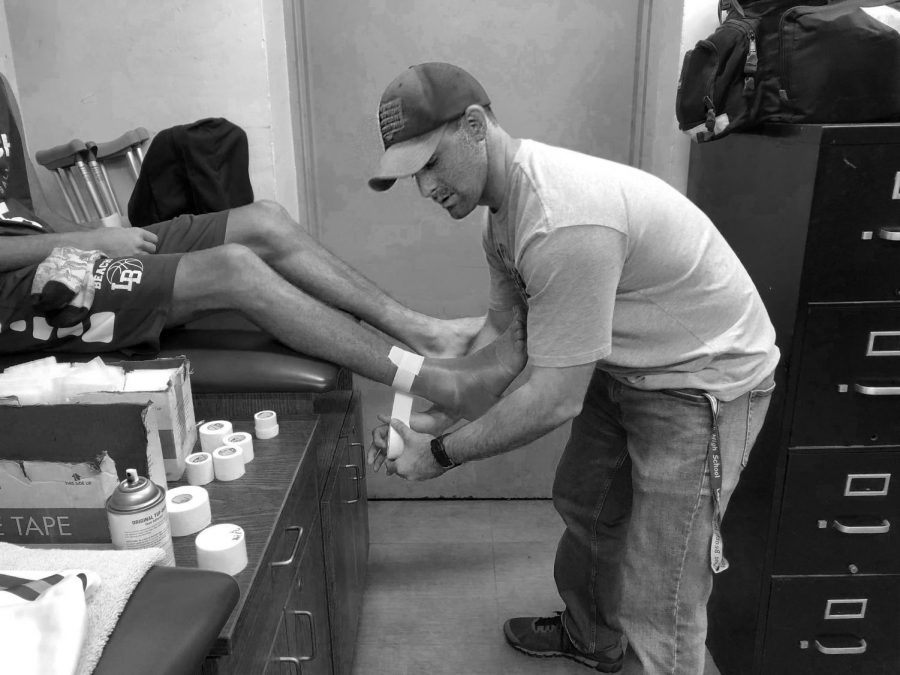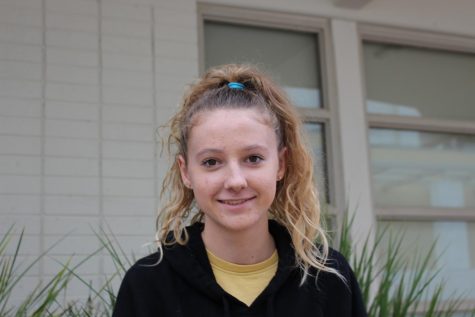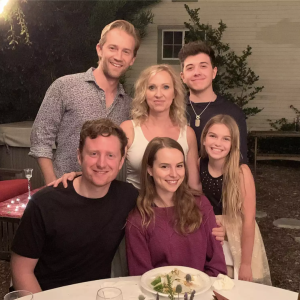Athletic trainer discusses injury prevention
January 8, 2019
Brush and Palette caught up with Athletic Trainer Tim Crilly regarding the importance of student-athletes staying healthy and preventing injury throughout their athletic careers.
Crilly on the possibility of a long-term injury:
“Many individuals sometime forget or do not think that initially an injury can cause long term or even life changing consequences. Many athletes, when initially injured during a game or practice, are concerned about whether they can continue to play in the game/practice. Part of my job is to also consider the well being and long term health of an individual after sustaining an injury. Every injury can pose different risks for long-term health. For example, a torn meniscus (cartilage in the knee) if not properly treated can predispose an individual to early onset osteoarthritis making it difficult or even painful to participate in certain activities such as hiking, running, jumping and in severe cases activities of daily living such as walking up and down stairs, kneeling, etc. This can later on in life make it difficult to play with your kids as a parent. A labral tear, cartilage that lines the ball and: socket joints of the shoulder and hips can have similar effects as a meniscus injury if not treated properly. Certain finger injuries if not splinted and treated properly as soon as they are sustained can cause deformities or difficulty with gripping and grasping objects.”
Crilly on concussion prevention:
“Another injury that can cause long-term and even life altering outcomes are concussions. If an individual sustains a concussion during a sport or activity and does not stop that activity immediately it can prolong their recovery dramatically and if another blow to the head is sustained shortly after, it can can cause a condition known as second-impact syndrome and up to death. If a concussion is not treated properly, not only does it prolong the recovery time, it can also lead to learning difficulties, difficulties with speech, vestibular problems such as dizziness and balance/coordination as well as visual difficulties. Multiple concussions over a lifetime can increase the likelihood of all these difficulties and can predispose to other conditions such as Alzheimer’s and dementia.”
Crilly on awareness:
“The best advice I can give to emphasize the importance of situational awareness. Be aware of your surroundings and potential hazards. Also know your body. know the difference between pain and soreness. Strengthening our bodies can also help prevent injury. Strengthening our muscles will help to create stability and protect our joints while increasing bone density.”
Additional considerations for the student-athlete:
- Foot/ Ankle Injuries
- Knee injuries
- Concussions
- Wrist injuries
How to prevent Basketball injuries:
Foot/Ankle injuries: before you go out on the court you should have the proper footwear and to tape your ankle.
Knee injuries: stretch and strengthen your leg and hitting the gym.
Concussions: Watch for concussion symptoms and if you are feeling any concussion symptoms seek help immediately.
Wrist injuries: keep your hands in healthy conditions and the less you run into players the better.
How to prevent Soccer injuries:
Foot/ ankle injuries: Rest, protect, ice, compress, and elevation. Footwork with proper shoes and jumping/ running that proper posture is used.
Knee injuries: proper warm-up and after a cool down and wear proper gear.
Concussion: strengthen the neck and shoulder muscles
Wrist injuries: buddy-taping” for support; application of a brace, splint, or cast
The proper nutrients a student athlete needs:
Protein found in meat, poultry, seafood, eggs, beans, nuts, and dairy foods
carbohydrates; fruits, vegetables, and whole grains are the best sources
vitamins as found in fruits and vegetables, for instance and minerals like calcium found in dairy products. School-age kids (ages 6 to 12) generally need between 1,600 and 2,200 calories a day. An athlete who is more active than a typical active kid might need to eat more.
How many hours should you practice a sport?:
20 hours per week, or 4 hours per day. Interscholastic athletics is 18 hours per week. No sports team will be allowed more than four practice hours per day, The same 18-hour maximum practice rule will apply to football.







